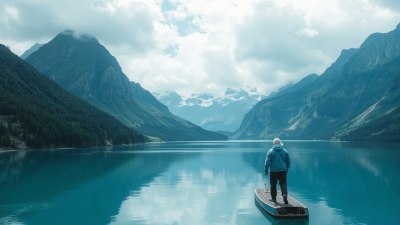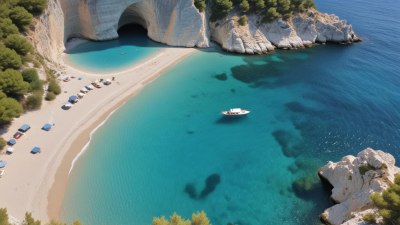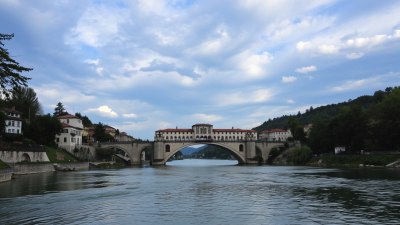Iceland’s Midnight Sun and Unpredictable Weather: Why It’s Still Worth the Trip
Explore Iceland's unique midnight sun and unpredictable weather, and discover why this destination offers unforgettable experiences.

Iceland is a land of stark contrasts, where fiery volcanoes meet glacial landscapes, and rugged coastlines give way to serene fjords. Beyond its breathtaking natural beauty, one of the most captivating aspects of this Nordic island nation is its unique climatic phenomena, particularly the midnight sun and its notoriously unpredictable weather. For many travelers, the allure of experiencing the midnight sun is a compelling reason to visit; however, the variable weather can raise questions about whether a trip to Iceland is truly worth it. This article delves into these intriguing aspects of Iceland, providing insights into why the country remains a top travel destination despite its weather quirks.
First, let's explore what the midnight sun actually is. During the summer months, particularly around the summer solstice, which occurs around June 21st, Iceland experiences an extraordinary natural phenomenon known as the midnight sun. This occurs because the Earth’s tilt allows for extended daylight hours, with the sun barely dipping below the horizon at night. In certain parts of Iceland, particularly in the north, the sun can remain visible for almost 24 hours a day. This phenomenon transforms nocturnal hours into a magical time for exploration and discovery, with landscapes bathed in the warm glow of sunlight even at midnight.
The midnight sun provides a unique opportunity for tourists to experience a fuller itinerary of activities, whether it’s hiking, whale watching, or simply enjoying a picnic under the endless sky. The sensation of watching the sun dip low yet never truly set invites travelers to embrace the adventurous spirit of exploration. Outdoor enthusiasts can trek the scenic trails of Landmannalaugar, take a dip in the geothermal springs, or explore the stunning Vatnajökull National Park, all under the radiant glow of an almost perpetual sunset.
However, while the midnight sun contributes to an enchanting travel experience, Iceland's weather is known for its volatility. Travelers often hear tales of experiencing four seasons in a single day. Iceland’s climate is classified as subarctic, with maritime influences creating unpredictable and rapid weather changes. One moment it might be sunny with clear skies, and just moments later, you could be caught in a sudden rain or hail shower. This unpredictable weather calls for careful planning and flexibility for travelers making their way through this stunning terrain.
So, how can visitors best prepare for Iceland's capricious weather? First and foremost, layers are crucial. The key to enjoying your Iceland trip lies in embracing the layers of clothing that can be added or removed as the weather changes. Start with a moisture-wicking base layer, add an insulating layer to keep warm, and finish off with a waterproof and wind-resistant shell. This combination will help you stay comfortable and ready for any climatic surprise that comes your way. It's also wise to pack accessories like hats, gloves, and scarves, even during the summer months, as temperatures can drop unexpectedly.
Another important tip for navigating Iceland's weather is to remain adaptable in your travel itinerary. While securing reservations for popular tours and activities is essential, kindly remember that conditions can alter plans at a moment's notice. Many tourists find that adjusting their schedules for weather conditions leads to spontaneous adventures that create memorable experiences. For example, if a planned hike gets canceled due to rain, consider visiting a nearby geothermal pool or exploring a local museum instead. This flexibility can turn a potential disappointment into an unforgettable opportunity to engage with Iceland's rich culture and heritage.
The unpredictability of Iceland's weather also plays a role in creating stunning photographic opportunities. Rainbows often appear following a rainfall, and dramatic weather contrasts can yield breathtaking images of rugged landscapes shrouded in mist or illuminated by sunlight. Photographers and nature enthusiasts can revel in capturing these elusive moments, which can make for striking visuals that symbolize the wild beauty of Iceland.
In addition to the stunning landscapes and unique phenomenon of the midnight sun, Iceland offers visitors a wealth of cultural experiences. The capital city, Reykjavik, is a hub of art, music, and history, perfect for those looking to immerse themselves in Icelandic culture during their stay. While in Reykjavik, visitors can explore the iconic Hallgrímskirkja church, visit the Harpa Concert Hall, and enjoy the vibrant street art that adorns the city's buildings.
Icelandic cuisine is another notable aspect of this destination, offering dishes that reflect its unique geography and resources. Traditional dishes often feature seafood, lamb, and dairy products, with visitors encouraged to try local delicacies such as fermented shark (hákarl) or the famous Icelandic yogurt known as skyr. Restaurants range from casual eateries to fine dining, making it easy for visitors to find something that suits their taste. Many dining establishments also take advantage of the abundant fresh local ingredients, promising a delightful gastronomic experience.
For those who venture beyond Reykjavik, Iceland's diverse landscapes make for an impressive natural playground. From the vibrant black sand beaches of Vik to the otherworldly geothermal areas of Haukadalur, where the famous Geysir and Strokkur spout hot water high into the air, each destination offers its own charm. One of Iceland's most renowned attractions is the Golden Circle, a popular route that connects three extraordinary sites: Þingvellir National Park, Gullfoss waterfall, and the geothermal wonders of Geysir. This circular route showcases the stunning natural and cultural features that define Iceland.
For geology enthusiasts, the chance to explore Iceland's volcanic landscapes is an enticing draw. The island is located on the Mid-Atlantic Ridge, with its unique position leading to significant volcanic activity. The past eruptions have crafted dramatic landscapes, from the vast lava fields of the Reykjanes Peninsula to the awe-inspiring craters of Askja. Exploring these geological wonders can provide not only an exhilarating adventure but also deep insights into the forces that shape the Earth.
Another captivating feature of Iceland is the opportunity to witness the Northern Lights during the winter months. While the focus of this article is the summer experience, many travelers plan their trips to coincide with the aurora borealis season, which typically runs from late September to mid-April. The dark nights and clear skies of winter create the perfect backdrop for observing this natural spectacle. For best chances, visitors often venture to the countryside, away from the lights of the city, to catch a glimpse of this mesmerizing display.
In conclusion, while Iceland's weather may be unpredictable, and its midnight sun can throw travelers into an exhilarating experience of prolonged daylight, it is precisely these traits that make Iceland such a phenomenal destination. The landscapes, culture, and adventure opportunities it offers cannot be diminished by a little rain or a sudden chill. With thoughtful preparation, flexibility in your plans, and a spirit of adventure, your trip to Iceland will be filled with unforgettable memories and breathtaking discoveries. Whether you find yourself basking in the midnight sun or sharing stories with fellow explorers over a warm bowl of Icelandic lamb soup, your Iceland journey promises to be one for the books.











